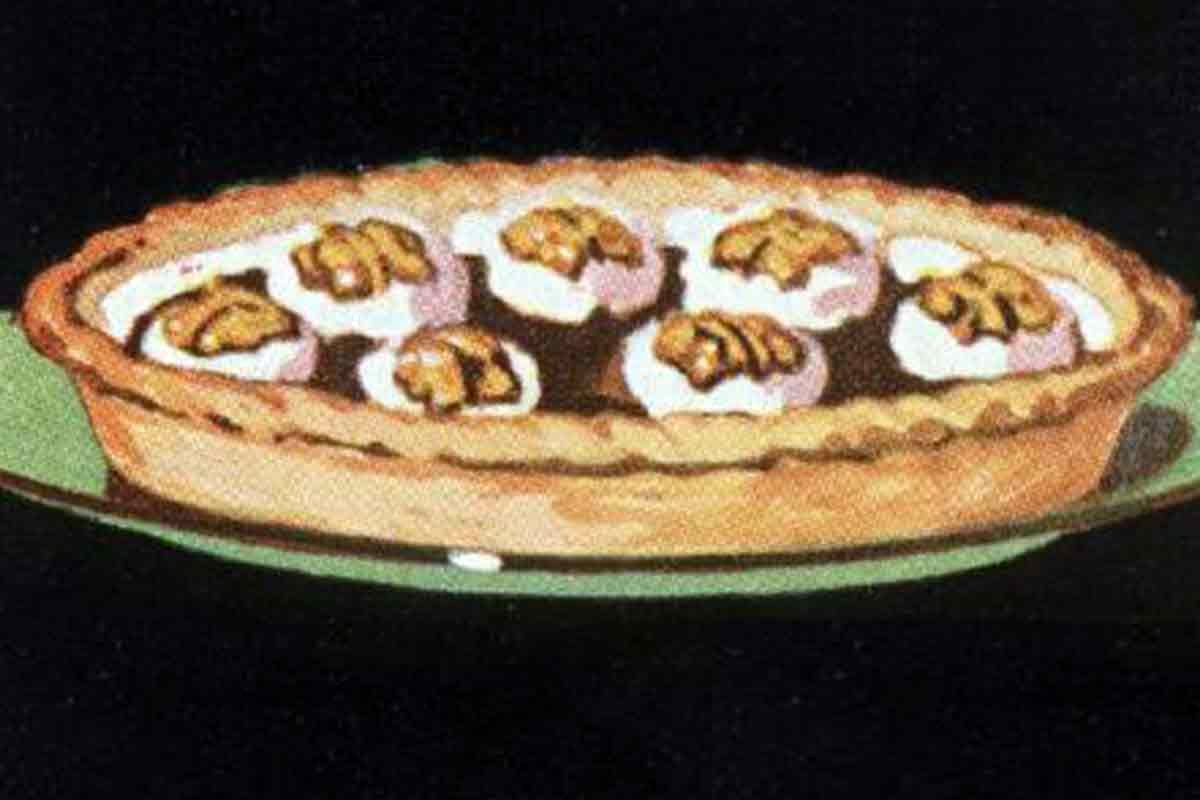Walnut Molasses Pie is the decadent cousin of your traditional Pecan Pie. This recipe from 1925 has a lush molasses custard filling full of walnut halves. Beyond the use of walnuts, the other key difference from your classic Pecan Pie: no corn syrup and no sugar. You read that right, a pie with no sugar. Instead, it relies on the mellow sweetness of the walnuts and molasses resulting in a pie filling that has a robust molasses flavor.
Pair with sweet topping like vanilla ice cream, sweetened whipped cream, or marshmallow sauce.

Walnut Molasses Pie - 1925
Ingredients
- 1 Unbaked Pie Crust
- 3 Eggs
- ½ cup Molasses
- 2 Tbps Butter or Margarine (melted)
- 2 cups Milk
- ⅙ tsp Salt
- 1 tsp Vanilla
- 2 cups Walnut Halves (plus 8-10 extra for decoration)
- ⅙ cup Flour
Instructions
- Preheat oven to 450 °F. Line pie dish with prepared pie crust dough.
- In a mixing bowl toss walnuts and flour together until evenly coated. Set aside.
- In a large mixing bowl beat eggs until frothy. Add butter, milk, molasses, salt and vanilla. Whisk 1-2 minutes until smooth.
- Fold in flour-coated walnuts and pour into pie dish.
- Bake preheated oven at 450° for 15 minutes. Reduce heat to 325° and bake an additional 30-40 minutes or until filling is set.
- Cool at least 40 minutes before serving. Decorate top with additional walnut halves.
Notes
Suggestions for Walnut Molasses Pie
+ Try it with pecans, Brazil nuts, or a mix of unsalted nuts.
+ Spice it up with a teaspoon of ground allspice, cardamom, or anise seed.
+ A shot of bourbon or dark rum – or 1 tablespoon of bourbon or rum extract
Source
Adapted from a recipe appearing in Around the Kitchen Clock with Walnuts (1925 ed.).


Comments are closed.